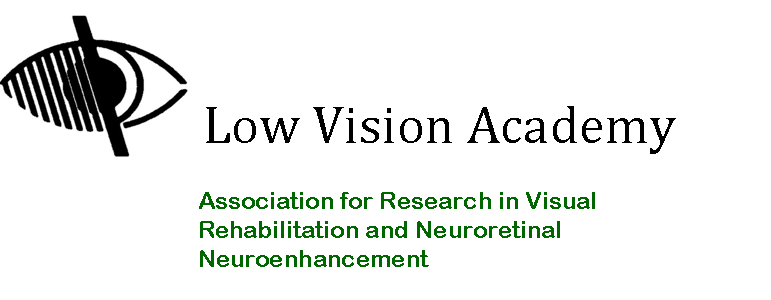What should a patient with impaired vision expect from a low vision specialist, ophthalmologist, orthoptist, or optician.
The three figures mentioned are fundamental in the rehabilitation process that allows a patient with impaired vision to regain a certain amount of visual independence.
The ophthalmologist is always the central figure, but he /she must be specialized in low vision. The ophthalmologist, specialised in low vision, must have at least two diagnostic tools, one which can analyse the sensitivity of the retina (preferably a microperimeter or alternatively a field analyser) and one that can examine the retina itself (OCT and / or fluorescein angiography). He / she also needs to know about all the rehabilitation possibilities available using either aids or photostimulation techniques, or through anterior (phacoemulsification and refractive surgery) and posterior (cell grafts, peeling etc..) segment surgery.
On the other hand, an eye-doctor should refer patients to a specialised centre or figure for analysis and treatment and work in collaboration. In this way, a patient with low vision should be given the possibility of receiving adequate responses.
The eye doctor, after the patient has completed vision rehabilitation and is able to read with the suggested system, may prescribe the right aid, offer help in finding a suitable optician specialised in low vision close to where the patient lives, provide the appropriate paperwork required by the NHS and take care of the necessary follow-up process.
The orthoptist, specialised in low vision, is a complementary figure to the ophthalmologist. In fact, the orthoptist follows the low vision patient during the rehabilitation process and only after the ophthalmologist specialised in low vision has given the necessary information and excluded any further treatment. Visual rehabilitation teaches the optimal use of the magnifying system (hypercorrection, telescope, video magnifier) for a given degree of visual impairment. It also instructs the patient on how to use the best possible settings through repeatable cycles of visual training or neural photostimulation.
The orthoptist informs the ophthalmologist on the outcome of rehabilitation and he/she then prescribes the appropriate assistance.
The optician specialised in low vision is an optician who has studied visual rehabilitation. The low vision patient is not just a normal patient. The optician carries out exactly what has been prescribed by the ophthalmologist specialised in low vision because he knows that it is the result of a careful and personalised visual rehabilitation programme and knows that low vision aids have unique characteristics compared to classic eyewear. He /she may also prescribe other types of aids such as LED lamps, or magnifying lamps, and non-optical aids for facilitating complementary activities required by the patient.
Ophthalmologic monitoring is recommended to prevent the serious diseases of the visually impaired patient from getting worse.
The patient should be informed about other possibilities offered by the NHS. Always following what has been done by the orthoptist who carried out the rehabilitation and reiterating what he / she has prescribed.
If there are obvious changes in the patient’s ability to read with the aid, the ophthalmologist who signed the prescription should be informed immediately.


